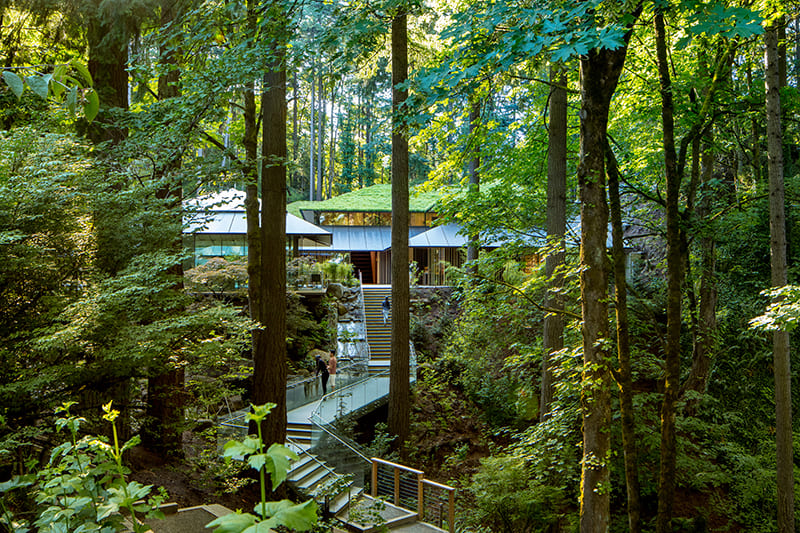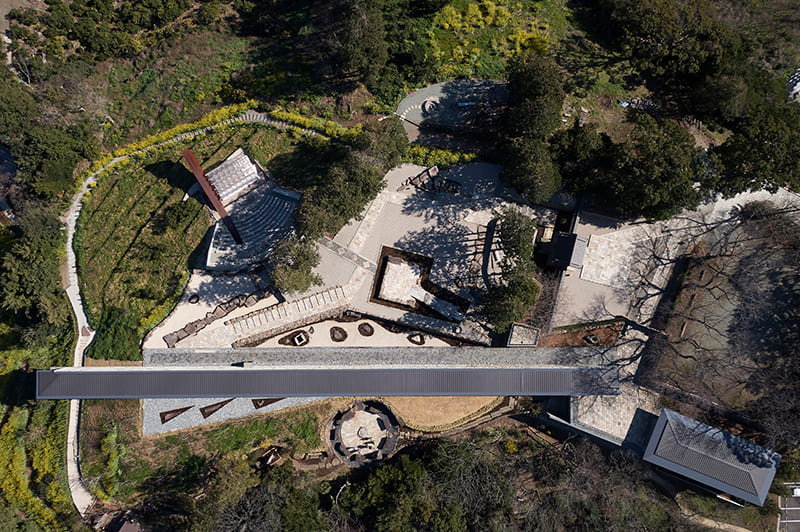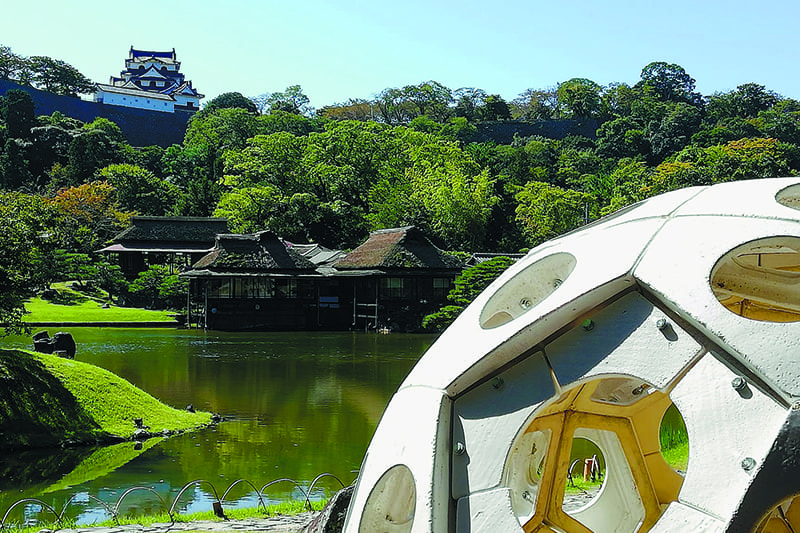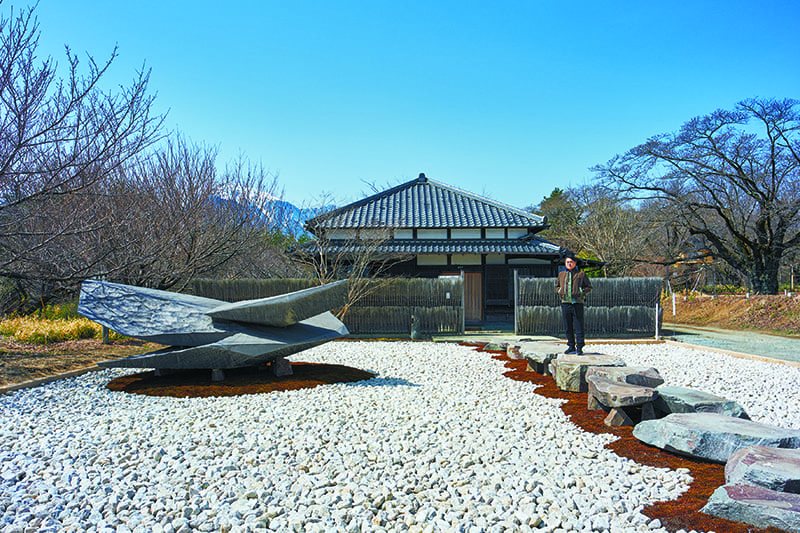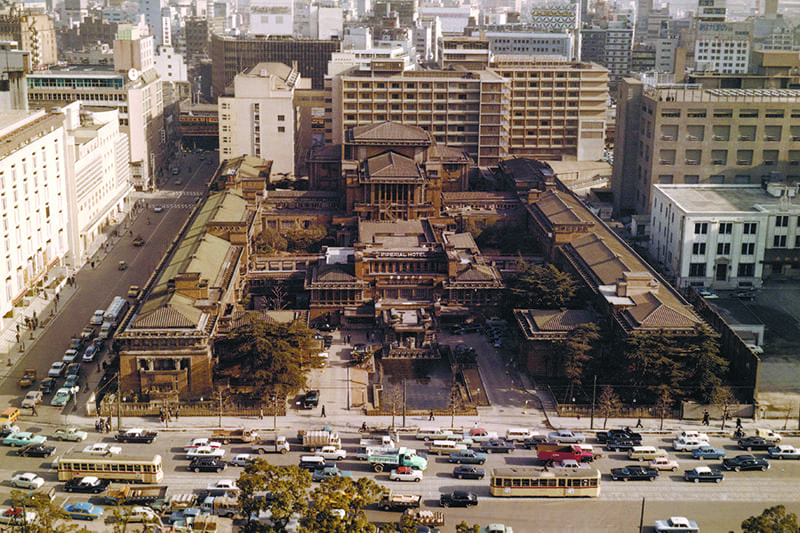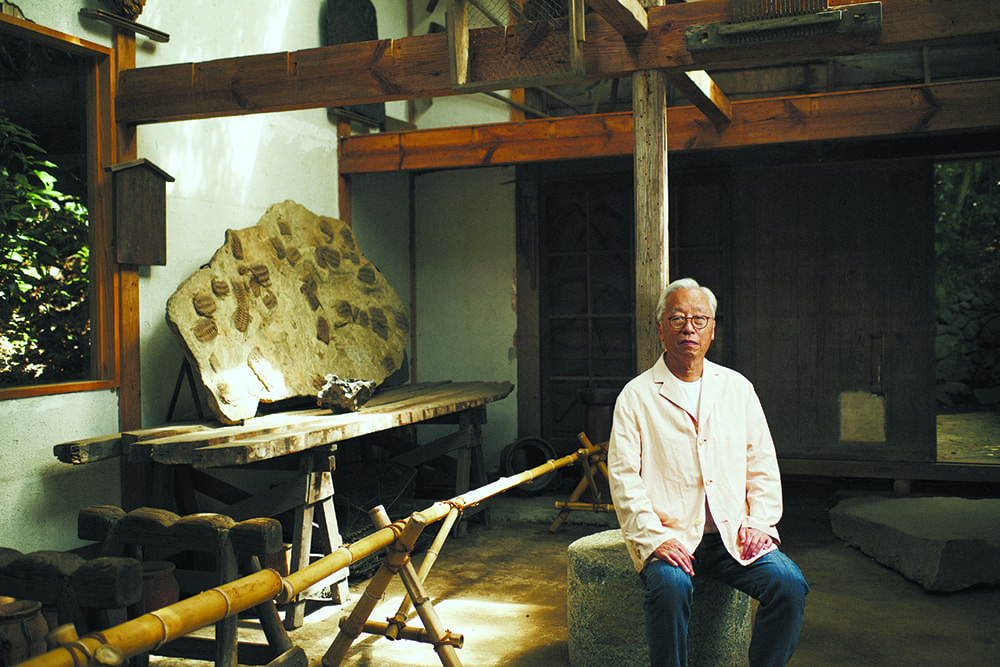July 26, 2024
Five must-see Japanese gardens
TRAVEL
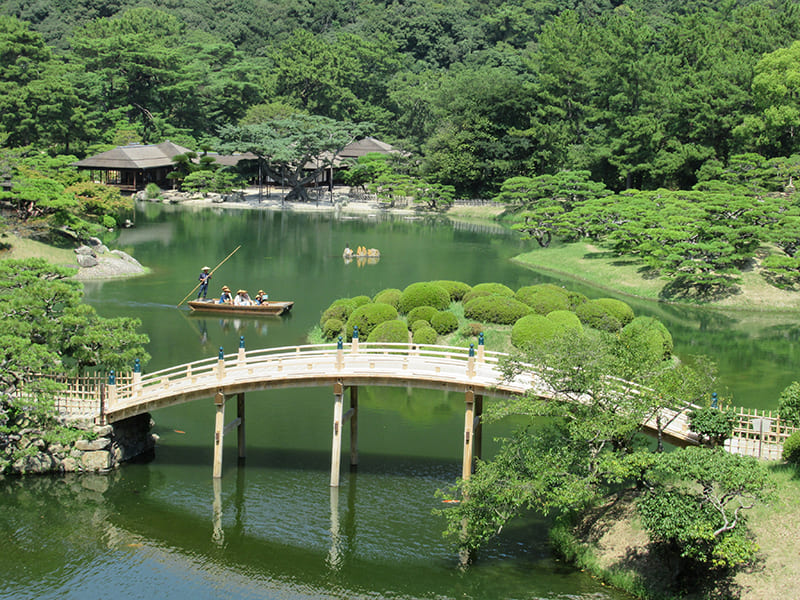
© RITSURIN GARDEN
We asked Aki Nakanishi, the Arlene Schnitzer Curator of Art, Culture and Education at the Portland Japanese Garden, to name his top five Japanese gardens in Japan. While acknowledging the difficulty of narrowing it down to just five, the first he named was Ritsurin Garden in Takamatsu, Kagawa Prefecture.
“The best-known gardens in Japan are known as the ‘Three Great Gardens of Japan’: Kairakuen in Mito (Ibaraki Prefecture), Korakuen in Okayama (Okayama Prefecture) and Kenrokuen in Kanazawa (Ishikawa Prefecture). But I tend to think that Ritsurin Garden is just as beautiful and of the same high quality,” he said.
He hastened to add that you can’t leave out Kyoto, where there are many famous gardens. “There are several extraordinary gardens in Kyoto that are not open to the public, so I’ll leave those out. Many are open to the public, such as Entsuji temple and Sanzenin temple. But if I had to choose one, it would be the Katsura Imperial Villa,” he said, referring to the Imperial Household Agency-owned villa in Kyoto’s Katsura area that was built by two successive generations of the Hachijo imperial family during the Edo Period (1603-1868).
Other Japanese gardens worth visiting include Fukui’s Yokokan Garden, which is beautifully integrated with water features; the Joeiji temple’s Sesshu Garden, said to have been created by the Zen monk and artist Sesshu; and the guesthouse Washin, created by contemporary artist Hiroshi Sugimoto. Next time you are looking for a travel destination, look no further than these five gardens?
1 Kagawa Prefecture
Ritsurin Garden
Ritsurin Garden is designated as a Place of Scenic Beauty by the national government. It consists of the south garden, created by a feudal lord in the Edo Period, and the north garden, which was developed in the Meiji Era (1868-1912) and later. The vast site of approximately 75 hectares includes six ponds and 13 “mountains,” offering a wide range of scenery to enjoy. The garden was formerly the residence of the Takamatsu Matsudaira family, who ruled this area during the Edo Period, and the garden was embellished by successive generations of lords. One addition, the Kikugetsu-tei tearoom, built in the early Edo Period, is not only a magnificent example of sukiya-style tearoom architecture, it also affords an exceptional view of the garden. In 1965 the Sanuki Folk Art Museum was opened within the garden. Designed by architect Tadashi Yamamoto, it features traditional local folk crafts and furniture designed by the architect George Nakashima, who once had a workshop in Takamatsu. The museum’s front and courtyard gardens were designed by Kinsaku Nakane, known for the garden at the Adachi Museum of Art in Shimane Prefecture.
● 1-20-16 Kuririn-cho, Takamatsu-shi, Kagawa Prefecture. Open: Sunrise to sunset. Admission: ¥410
https://www.my-kagawa.jp/static/en/ritsurin/
2 Kyoto Katsura
Imperial Villa
The Katsura Imperial Villa is considered one of the finest gardens in the nation, embodying the aesthetic of Japan’s imperial court. Construction of the garden was begun in the early 17th century by Prince Toshihito, the first head of the Hachijo imperial family, and it was completed to its present form through large-scale additions by his son Prince Toshitada. The villa is located in the southwestern part of Kyoto, where many court nobles built residences during the Heian Period (794-1185). On the west side of the approximately 6.9-hectare site, which is surrounded by bamboo forests, is a group of residences arranged in a staggered formation and designed in the shoin style (centered around a ceremonial study for greeting visitors). In front of these, around a pond, are tearooms and other structures. The villa’s beauty lies in the harmony achieved between the architecture and the garden. For example, opening the sliding doors creates a living space that fuses the interior and the garden, reflecting the traditional Japanese attitude of appreciating the beauty of nature as it changes from season to season. The garden is under the jurisdiction of the Imperial Household Agency, and visitors must apply in advance.
● Katsura Gozen, Nishikyo-ku, Kyoto-shi, Kyoto Open: Every day except Mondays (or the following day if Monday is a national holiday), Dec. 28 to Jan. 4, and days when events are held. Admission: Inquire through the Imperial Household Agency Kyoto at https://kyoto-gosho.kunaicho.go.jp/en/katsura-rikyu/visit
https://sankan.kunaicho.go.jp/english/index.html
3 Fukui Prefecture
Yokokan Garden
The most notable feature of this garden is its pond. Located along the outer moat of the five that once surrounded Fukui Castle, the water was incorporated into the garden to create a graceful and ethereal “water garden.” The garden was created in the early to mid-Edo Period as a villa of the Matsudaira family, the feudal lords of Fukui. One of its features is that the pond is nearly square and fills most of the site, with no island in the middle. The surface of the water becomes one with the structures along its edge, and when you are inside a building you can see the sky and moon reflected clearly on the water, giving you the illusion of being on a boat. The original building in the sukiya style was destroyed in an air raid in 1945 but was reconstructed, offering an unchanged view.
● 3-11-36 Houei, Fukui-shi, Fukui Prefec ture Open: 9 a.m.-7 p.m. (5 p.m. from Nov. 6 to the end of February), except Dec. 28-Jan. 4. Last admission is 30 minutes before closing. Admission: ¥220
http://www.fukuisan.jp/en/yokokan
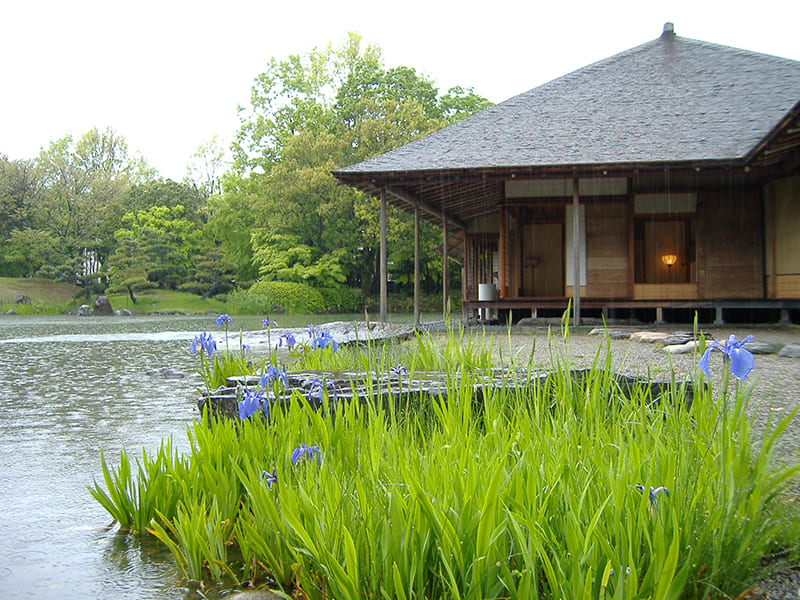
4 Yamanashi Prefecture
Washin
Kiyoharu Art Colony is a cultural facility in Hokuto, Yamanashi Prefecture, overlooking the Southern Alps. The former site of an elementary school was reborn as an art site in 1980 and is home to several famous buildings, including art museums designed by Yoshio Taniguchi and Tadao Ando. The guesthouse of the facility, Washin, was completed in 2019 and was designed by the architectural firm of the New Material Research Laboratory, which includes artist Hiroshi Sugimoto and architect Tomoyuki Sakakida. It is a special facility that is normally closed to the public. The guesthouse’s garden was created by Sugimoto. The moment you open the guesthouse door, the architecture becomes one with the garden. The Enoura Observatory, an art site in Kanagawa Prefecture run by a foundation Sugimoto established, has another garden designed by Sugimoto that with its compact, residential scale is also a masterpiece.
● 2072 Nagasaka-cho, Nakamaru, Hokuto-shi, Yamanashi Prefecture Open: 10 a.m.-5 p.m. (admission until 4:30 p.m.) except Mondays (or the following day if Monday is a national holiday) and New Year’s holidays. Admission: ¥1,500
https://www.kiyoharu-art.com/
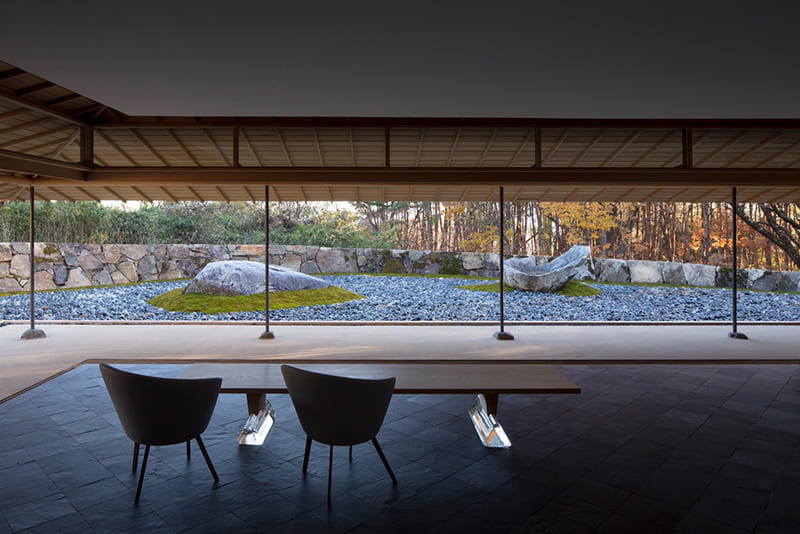
5 Yamaguchi Prefecture
Joeiji Temple Sesshu Garden
Sesshu (1420-1506) was a Zen monk of the Muromachi Period (1392-1573) who was also a master of ink-wash painting, with six of his works, including several landscapes, now designated as National Treasures. This garden is said to have been created by Sesshu himself. The villa was built as a holiday house by Ouchi Masahiro, a cultured feudal lord, and it is said that he ordered Sesshu to build the garden. Situated in a valley surrounded by woods on three sides except the south, which faces the temple, the garden is designed with a pathway around the Shinji pond, with a “dry waterfall” suggested by stones in the northeast. The unique use of tateishi, stones dug into the ground so they stand upright, is suggestive of a Muromachi Period garden and contributed to the garden’s official designations as a Historic Site and a Place of Scenic Beauty. Incidentally, the dry landscape garden Nanmei-tei in front of the main hall was created by Mirei Shigemori, one of the most famous gardeners of the Showa Era (1926-1989). With its white sand and moss-covered rocks designed to resemble the sea and mountains, it is also not to be missed.
● 2001-1 Miyanoshita, Yamaguchi-shi, Yamaguchi Prefecture Open: 8 a.m.-5 p.m. (4:30 p.m. from November to March), all year. Admission: ¥300 http://sesshu.jp/ (Japanese only)
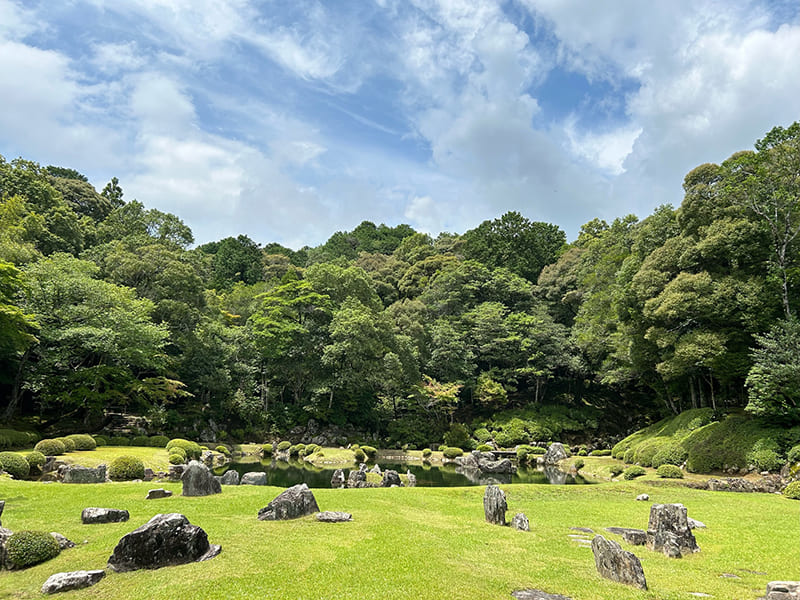
庭の目利きが選ぶ、日本で見るべき5つの庭園。
〈ポートランド日本庭園〉で文化・教育プログラムを担当する中西玲人上席執行役員に、日本国内で見るべき日本庭園を5つ挙げてもらった。日本国内には良い庭園が多いので選定するのは難しいとしながらも、彼が最初に名前を挙げたのが香川県高松市にある〈栗林公園〉だ。「大名庭園で有名なのは、水戸にある〈偕楽園〉、岡山の〈後楽園〉、金沢の〈兼六園〉で「日本三名園」と呼ばれています。しかし私はそれと同等に美しく、クオリティが高いと感じるのが〈栗林公園〉の庭園です」と語る。
また名園が数多い京都の庭も外せないという。「京都で公開されている中でも圓通寺や三千院など良い庭園はたくさんありますが、ひとつ選ぶとしたら〈桂離宮〉だと思います」と、宮内庁が所轄する、皇族である八条宮が親子二代に渡り、江戸時代につくった別荘を挙げた。その他、水と一体となった福井の〈養浩館庭園〉、禅僧で画家の雪舟が作庭したと言われる〈常栄寺雪舟庭〉、現代美術作家・杉本博司がつくったゲストハウス〈和心〉の庭も、わざわざ足を運ぶ価値があるという。
Return to Sustainable Japan Magazine Vol. 38 article list page

